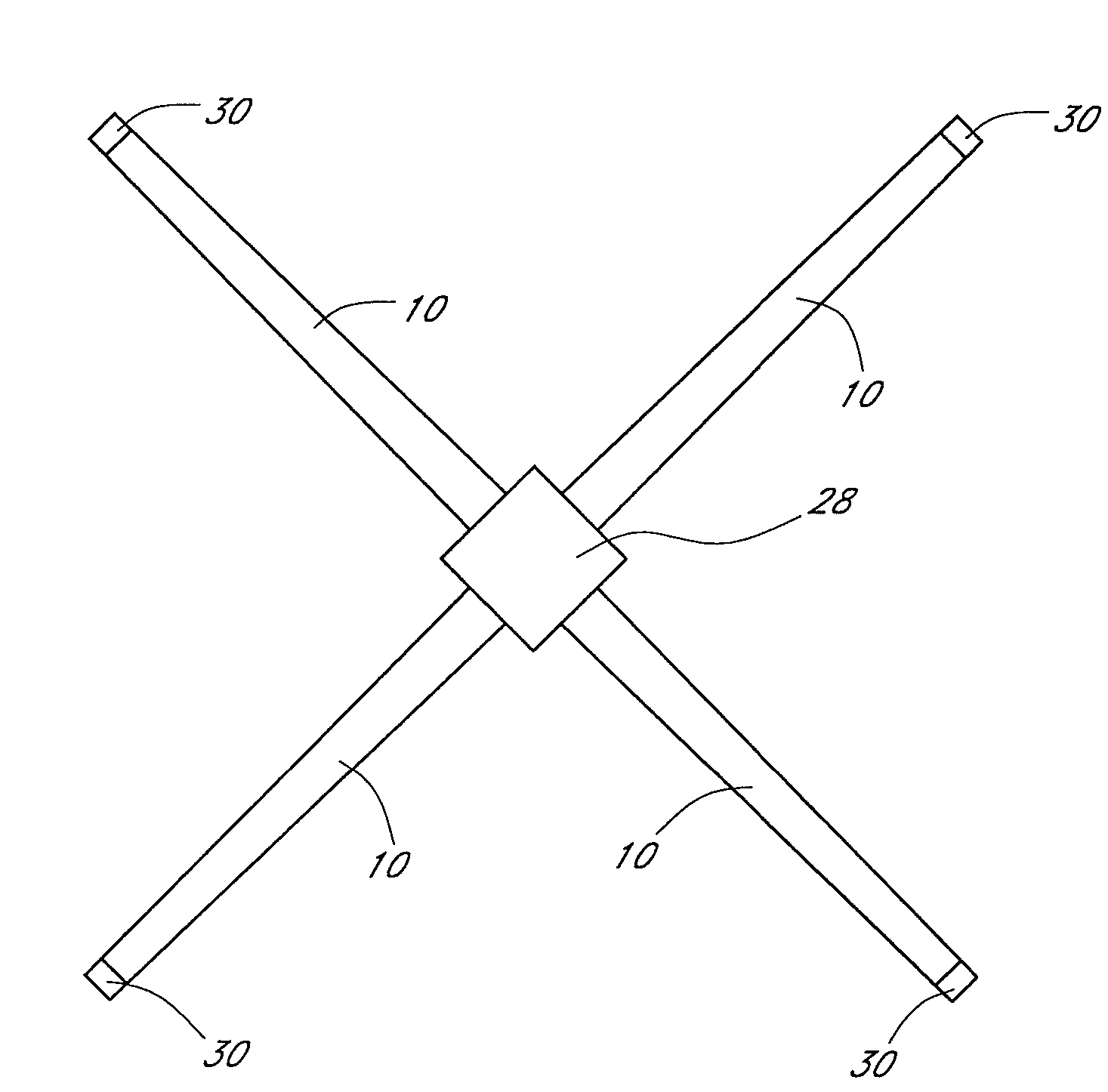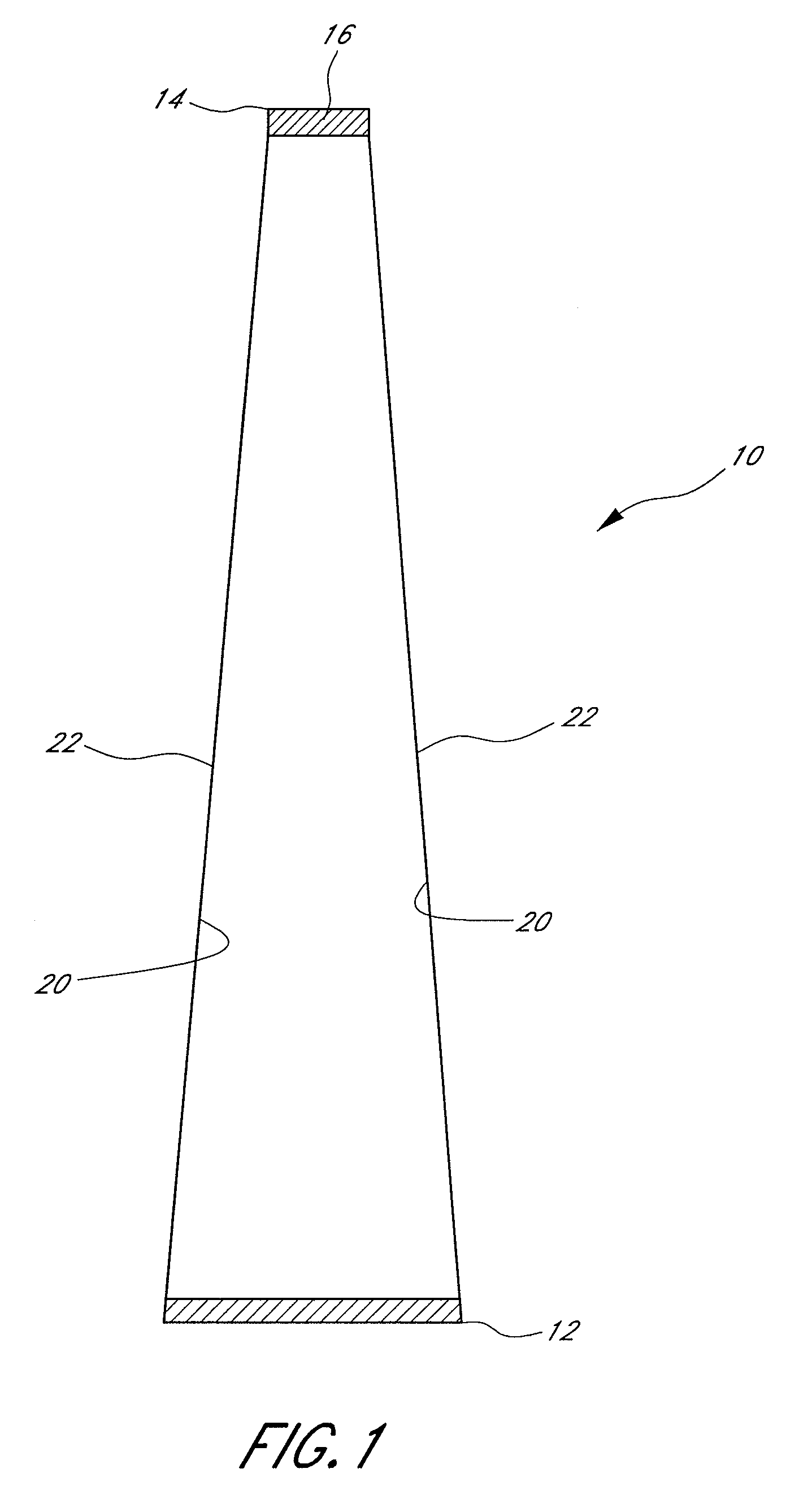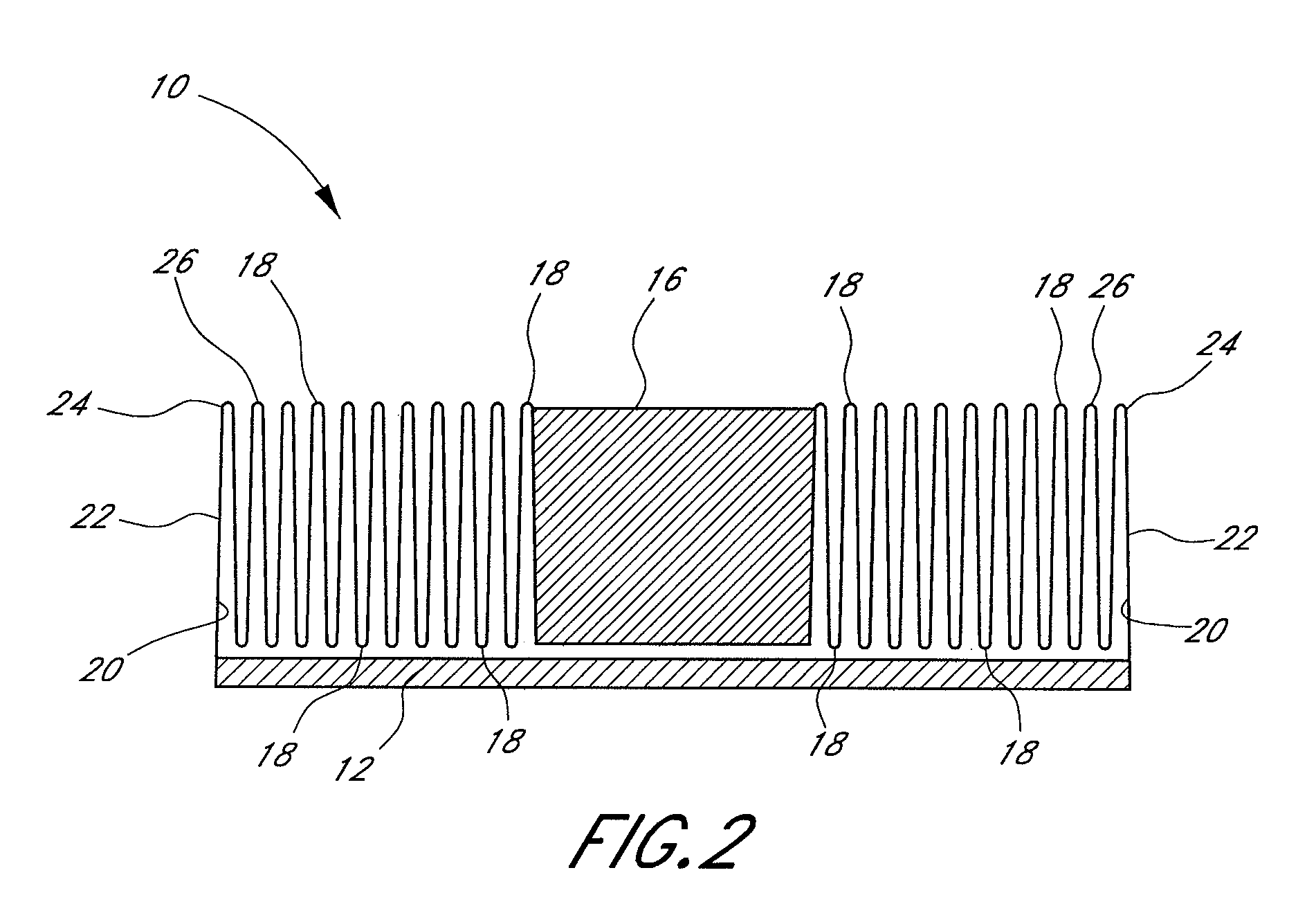Deployable inflatable boom and methods for packaging and deploying a deployable inflatable boom
a technology of deployable inflatable boom and deployable inflatable boom, which is applied in the field of deployable structures, can solve the problems of prone to failure of the boom, stress and wear along the creases of the boom, and limited cargo space of the rocket and shuttl
- Summary
- Abstract
- Description
- Claims
- Application Information
AI Technical Summary
Benefits of technology
Problems solved by technology
Method used
Image
Examples
Embodiment Construction
Background of Invention
[0001]
Field of the Invention
[0002] The present invention relates to deployable structures. More particularly, the present deployable inflatable boom and methods for packaging and deploying a deployable inflatable boom provide controlled and predictable deployment behavior.
Description of the Related Art
[0003] Structures for use in space must be packaged, loaded into a rocket or shuttle, and launched into space. The cost of launching items into Earth orbit can exceed $10,000 per kilogram. Thus, any structure to be used in space is ideally as lightweight as possible. Further, rockets and shuttles have limited cargo space. Thus, many structures for use in space are designed to be collapsible so that they occupy little storage space relative to their deployed size. Once in space, the structures deploy to their usable configuration.
[0004] Inflatable structures offer the dual advantages of a compact packaged configuration and light weight, making them ideal for use i...
PUM
 Login to View More
Login to View More Abstract
Description
Claims
Application Information
 Login to View More
Login to View More - R&D
- Intellectual Property
- Life Sciences
- Materials
- Tech Scout
- Unparalleled Data Quality
- Higher Quality Content
- 60% Fewer Hallucinations
Browse by: Latest US Patents, China's latest patents, Technical Efficacy Thesaurus, Application Domain, Technology Topic, Popular Technical Reports.
© 2025 PatSnap. All rights reserved.Legal|Privacy policy|Modern Slavery Act Transparency Statement|Sitemap|About US| Contact US: help@patsnap.com



